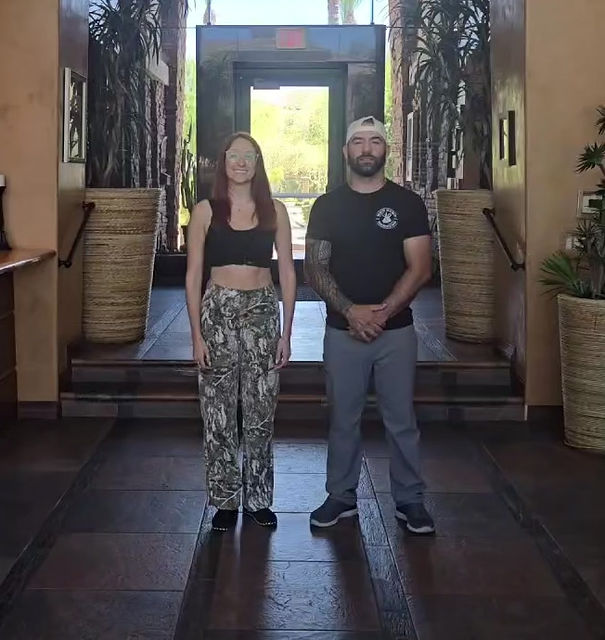Country Swing
Country Swing (CS) is a rotational stationary dance where partners rotate around a shared center (in basic patterns) or around each other (in breakouts), primarily using right-side passing movements. It's danced to music with a heavy "four-on-the-floor" rhythm, typically ranging from 90–130 BPM.
The default footwork pattern is often described as slow-slow-slow (1-step), with room for syncopation using quicks.
Dancers alternate which foot they start moving forward with right foot on one pass, left foot on the next, often initiated from a rock step.
Timing Structure

In this 1-step system:
-
A "quick" is 1 count
-
A "slow" is 2 counts
Depending on the BPM of the song, you would either step each count (quick) or each 2 counts (slow) for your basic. From there you would be able to expand to syncopations and rhythm breaks for more complex patterns but utilizing the 1-step fundamentals as your baseline.

Steps Taken During Basic Passes

For the Country Swing basic, the Leader starts with their left foot forward and the Follower starts with their right foot forward. Each dancer’s feet will not be squared up. Each dancer will then put their weight on their respective back legs.
The core components of a basic pass are:
-
Strike Forward – Both partners step forward, the leader on their left foot and the follower on their right foot.
-
1/2 Turn – Partners step forward and one of them rotates 180 degrees facing away from their partner, around a central axis, maintaining connection with the other.
-
Rock Step – Partners rock back, transferring weight before the next forward strike.
This simple three-part structure forms the backbone of many Country Swing moves, providing both momentum and control as the dance progresses.
Country Swing: Defining Characteristics of Movement

Rotating Orientation and Intent: Country swing has its orientation rotate throughout the dance. Dancers often move through space with rotational momentum, especially when exiting a rock step. Forward movement—particularly from follows—tends to rotate over the front foot rather than stay squared.

-
Use of the Rock Step Away: The rock step is foundational in country swing. It’s used to generate momentum and initiate changes in direction.
-
Primarily Right Side Passing Movements: Country swing basics are primarily composed of righ-side passing movements. At least 60% of the dance typically consists of right-side passing variations.
-
Alternating Rotation Throughout the Dance: Both dancers, but especially followers, should be alternating the direction of rotation each pass - one pass turning left, the next pass turning right, and so on. Both dancers also need to alternate which foot is used to rock back after every pass.
-
Travel from Both Partners, Swing Around a Central Post: Both leads and follows travel roughly equal distances from each other during the basic patterns rotating around a central connection post.
Country Swing: Music Characteristics

Country Swing is most commonly danced to music with a "four-on-the-floor" rhythm—where the bass drum hits on every beat in a 4/4 time signature. This creates a strong, consistent downbeat that supports one-step movement and rotational patterns.
Tempo Guidelines
-
Comfort Zone: 90–120 BPM
-
Challenging Range: 80–130 BPM
-
Double Time: 180–240 BPM
Rhythmic Qualities
-
A clear downbeat on every beat is ideal.
-
Songs may feature a light backbeat on the “and” counts or no heavily defined backbeat at all.
-
Avoid songs with heavily syncopated or lopsided rhythms, such as a quick-quick-slow (QQS) structure.
Commonly Used Song Styles
-
Four-on-the-floor country hits
-
Up-tempo two-step songs
-
Slower polka-style tracks
Song Examples
-
"Huntin', Fishin', and Lovin’ Every Day" – Luke Bryan
-
"Hooked" – Dylan Scott
-
"Dancin’ in the Country" – Tyler Hubbard
-
"Country Girl (Shake It for Me)" – Luke Bryan
-
"Lose It" – Kane Brown
-
"One Mississippi" – Kane Brown
-
"Drop" – Laci Kaye Booth
-
"Parachute" – Chris Stapleton
-
"Chills" – James Barker Band
